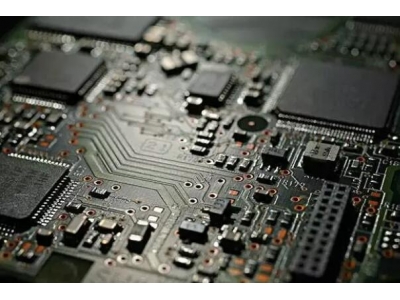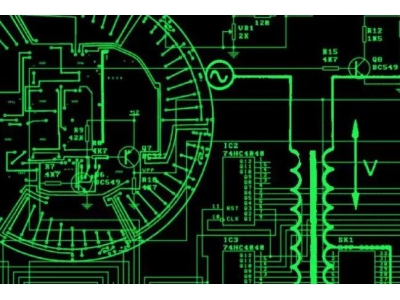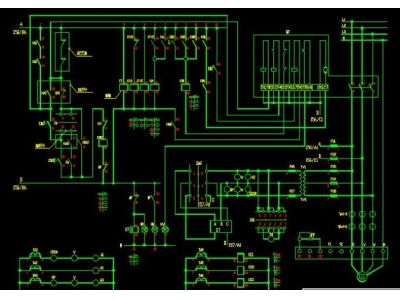[初中物理]蓄电池电路图怎么画?
一、[初中物理]蓄电池电路图怎么画?
用你所描述的1,2都可以。
通常画的时候,如果是1:3个画完整,旁边标记3*xV,x为单个电池电压值; 如果是2:就这样画,旁边标记xxV,xx为总电压值。
二、电池的电路图符号?
电池在电路图中的符号是两个竖线一长一短。长的为正极短的为负极。
三、充电宝电池串联电路图?
充电宝的输入USB端口一般接5v充电电压,输出uSB端口输出5V电压给手机充电,下面我们来看一个简单的充电宝电路图。
(图片来源于网络)
FM6316FE构成的充电宝电路。
上图中的FM6316FE是一款新型充电宝专用Ic,内部集成有锂电池充电电路、DC-Dc升压电路及负载检测电路,并且带有充放电指示灯驱动电路。该Ic的充电电流可由外接电阻设置,最大为1A。
四、锂电池吸尘器电路图?
没有锂电池吸尘器电路图,只有锂电池吸尘器介绍
锂电池吸尘器是伴随着移动吸尘器在日常生活中普遍的应用而得以发展、大量普及的,以四只18650锂电池四串一并的方式组合成的14.8V锂电池作为通用型号,在持续工作时间、远程测量距离、电量保持等诸多性能方面具有更多的优势。
五、电路图?
画电路图需要先找好图形绘制工具 与工具相结合 能更快 更好的提高工作效率 不耽误时间 现在市场上的亿图图示功能很强大 操作简单
六、蓄电池容量测试仪电路图?
图2-1智能放电监测仪外形图序号品名数量备注1智能放电监测仪主机1 2数据采集盒(兼容2V、6V、12V电池)--不同电压等级,数量不等。3监测通讯终端1 4监测通讯终端专用电源1 5U盘1 6放电电缆2红、黑各一条7电压监测线1 8电流传感器(选配件)1不同电流等级,量程不同。9数据采集线(2V、6V/12V两种)--不同电压等级,数量不等。10主机天线1 11AC220V电源线1 12说明书1 13PC机软件光盘1 14铝合金包装箱1 15USB-RS232转接线1 16USB-RS232转接线驱动光盘1
七、24V蓄电池充电电路图(急)?
你需要说明蓄电池的容量,因为需要增加一个浮充充电器为蓄电池充电,如果容量很小,比较简单,否则需要较大功率的充电器,一般充电电流为蓄电池的容量的十分之一,也就是10AH的蓄电池需要用1A的电流。
总体思路:平时由浮充充电器提供电源并保持蓄电池充电或涓流充电,当市电断电,直接由蓄电池供电。
需要考虑的地方:蓄电池标称24V,但是一般浮充电压要达到27.6V,你需要考虑你的电器设备是否可以承受该电压,如果不行需要增加降压电路等。
八、锂电池并联串联防回电防反充电电路图?
你这图显示其实电器应该不会工作,这相当于把3个电池并联在一起,电器相当于是增加了电池的电阻而已,如果3个电池电压一致的话,电路中不会有电流,如果开始3个电池电压不一样,电压高的就会给电压低的充电
九、3.7伏电池怎么升压至9伏,求电路图?
需要用到直流斩波 Boost电路,但是不建议你这么做了,你的3.7v一看就是锂电池,升压你需要用到复杂的可控开关,而且效果真心不一定好,建议你用一个整流装置,现在市场上有很多
十、探照灯电路图
探照灯电路图: 理解、构建和优化探照灯
探照灯是一种广泛应用于舞台演出、户外照明和应急照明等领域的强光照明设备。在探照灯的核心部件之一是它的电路板,负责控制和供电。本文将带您深入了解探照灯电路图的构建和优化,帮助您了解探照灯的工作原理,并提供指导以构建高效可靠的探照灯。
了解探照灯电路图
探照灯电路图通常包括多个关键组件,如电源模块、控制模块、光源模块等。通过仔细研究电路图,您可以了解到这些组件之间的连接方式和信号传输原理。
在电路图中,常见的连接方式包括并联和串联。并联的组件同时接收相同的电压,但电流被分流到各个组件;串联的组件则依次接收电压,电流在各个元件之间相等。
此外,探照灯电路图中的控制模块通常包括变阻器、电位器和开关等元件,用于调节和控制亮度、色温等参数。
构建探照灯电路图
构建探照灯电路图需要具备一定的电子电路基础知识。以下是构建探照灯电路图的基本步骤:
- 确定探照灯的功率需求和光照要求。
- 选择合适的电源模块,确保其输出电压和电流满足探照灯的需求。
- 设计控制模块,包括亮度调节、开关控制和保护电路。
- 选择合适的光源模块,如LED光源。
- 根据电路图进行元件的连接和布局。
- 进行电路测试和参数调整,确保探照灯的性能符合要求。
优化探照灯电路图
优化探照灯电路图可以提高探照灯的性能和稳定性,延长其使用寿命。以下是一些优化措施:
- 选择高效能源: 选择高效的电源模块,以减少能量损耗和发热。
- 合理布局: 在电路板上合理布局组件,减少信号干扰和高温区域。
- 保护电路设计: 添加过流保护、过压保护和短路保护等保护电路,提高探照灯的安全性。
- 使用优质材料: 选择优质元件和材料,降低故障率和损耗。
- 热管理: 针对高功率探照灯,设计风扇散热模块,保持其正常工作温度。
结论
探照灯电路图是构建和优化探照灯的重要参考。通过深入了解电路图,您可以更好地理解探照灯的工作原理,并根据需求构建高效可靠的探照灯。优化探照灯电路图可以提高探照灯的性能和稳定性,延长其使用寿命。希望本文对您进一步了解和构建探照灯有所帮助。
Translated text in English: htmlFlashlight Circuit Diagram: Understanding, Building, and Optimizing Flashlights
A flashlight is a powerful lighting device widely used in stage performances, outdoor lighting, and emergency illumination. One of the key components of a flashlight is its circuit board, which is responsible for control and power supply. This article will take you through the understanding, building, and optimization of flashlight circuit diagrams, helping you grasp the working principles and provide guidance for constructing efficient and reliable flashlights.
Understanding Flashlight Circuit Diagrams
A flashlight circuit diagram typically consists of several essential components such as power modules, control modules, and light source modules. By studying the circuit diagram closely, you can understand how these components are connected and the principles of signal transmission.
In circuit diagrams, common connection methods include parallel and series connections. In parallel, the components receive the same voltage simultaneously, but the current is divided between them. In series, the components receive the voltage sequentially, and the current is equal between the elements.
In addition, the control module in the flashlight circuit diagram often includes components such as variable resistors, potentiometers, and switches to regulate and control brightness, color temperature, and other parameters.
Building Flashlight Circuit Diagrams
Building a flashlight circuit diagram requires a certain level of knowledge in electronic circuits. The following are the basic steps for constructing a flashlight circuit diagram:
- Determine the power requirements and lighting needs of the flashlight.
- Select a suitable power module to ensure its output voltage and current meet the requirements of the flashlight.
- Design the control module, including brightness adjustment, switch control, and protection circuits.
- Select a suitable light source module, such as LED light sources.
- Connect and layout the components according to the circuit diagram.
- Conduct circuit testing and parameter adjustment to ensure the flashlight's performance meets the requirements.
Optimizing Flashlight Circuit Diagrams
Optimizing flashlight circuit diagrams can improve the performance, stability, and longevity of flashlights. Here are some optimization measures:
- Choose efficient power sources: Select high-efficiency power modules to reduce energy loss and heat generation.
- Proper layout: Arrange components on the circuit board in a manner that reduces signal interference and high-temperature areas.
- Protection circuit design: Add protection circuits such as overcurrent protection, overvoltage protection, and short circuit protection to enhance flashlight safety.
- Use high-quality materials: Choose quality components and materials to lower failure rates and losses.
- Thermal management: Design fan cooling modules for high-power flashlights to maintain normal operating temperatures.
Conclusion
A flashlight circuit diagram is a crucial reference for building and optimizing flashlights. By gaining a deeper understanding of the circuit diagram, you can better comprehend the working principles of flashlights and construct efficient and reliable flashlights according to the requirements. Optimizing flashlight circuit diagrams can enhance performance, stability, and lifespan. We hope this article helps you further comprehend and build flashlights.





